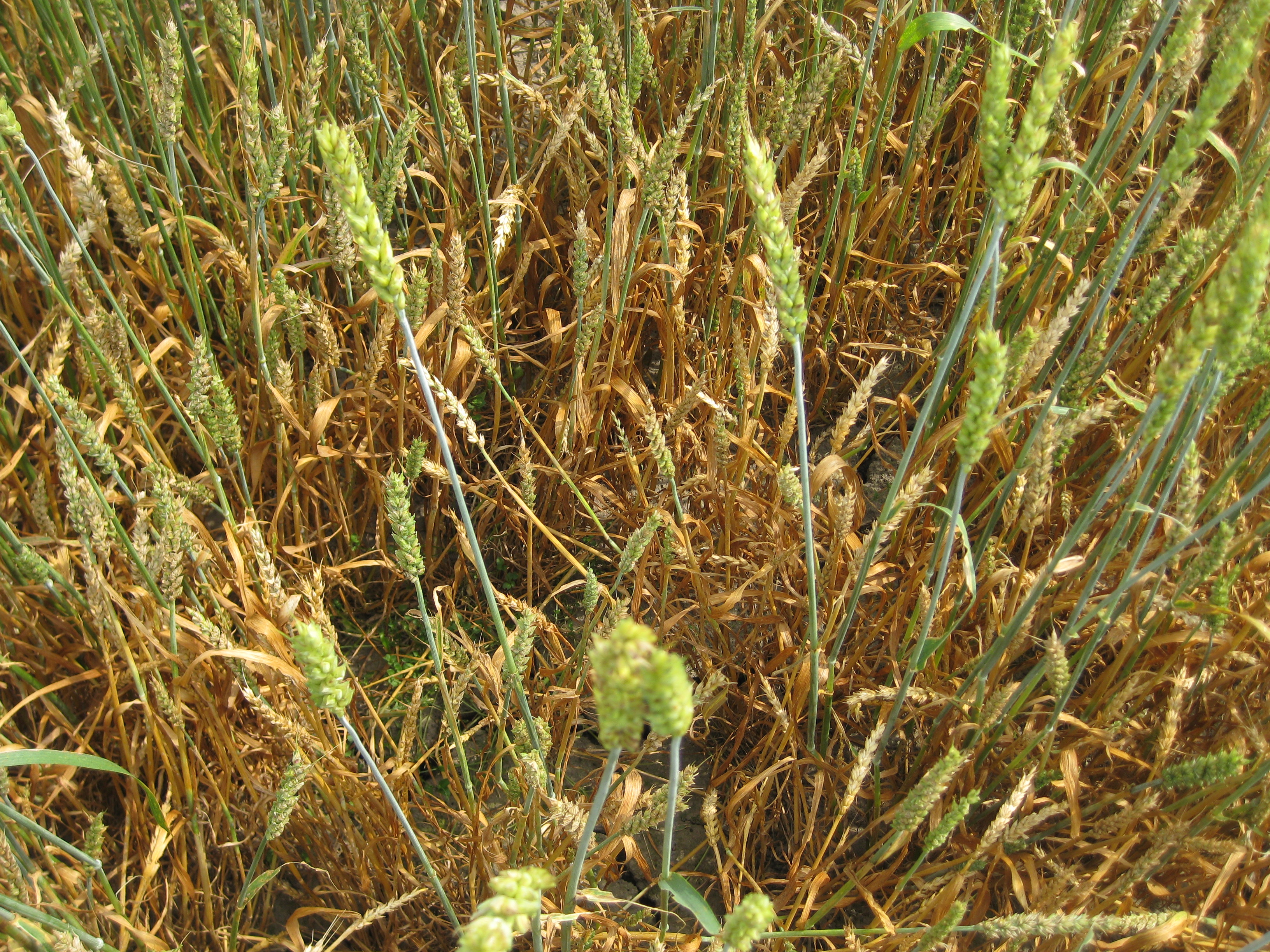How to combine and store wheat contaminated with Dwarf Bunt
As wheat harvest rolls out there are many farmers that are being forced to manage Dwarf Bunt in the field and in the bin. We chatted with Peter Johnson, Ontario Ministry of Agriculture, Food and Rural Affairs Wheat Specialist, to get some tips on how to manage this disease throughout the harvest season.
Harvest dry, crank up the air
With an infected field, the first line of defence against managing for quality is the moisture of the grain. Strive to combine when it’s as dry as possible, stresses Johnson. Although he recognizes that sometimes it’s not possible to wait until the wheat is 14 percent to combine, anything under 15 percent is ideal.
In wet grain, the spores from the bunt balls adhere more aggressively to the grain increasing the odour and causing greater
contamination. However, Johnson discovered this year that
this is not the only reason to avoid harvesting grain above 15 percent. He has also found that wet bunt balls absorb proportionately more moisture than grain meaning that when grain is at 18 percent moisture, it is impossible to blow the bunt balls out the back of the combine.
Turning up the air on the combine is also important to help blow the bunt balls out the back. Although blowing the bunt balls out the combine will not stop contamination of the grain, it will improve the possibilities of management for bunt after harvest. If there are still bunt balls in the sample when it goes into the drier or the bin, there is risk that these bunt balls can burst when the grain comes out of the bin causing recontamination.
Bin management
Once in the bin, Johnson notes that the best way to reduce contamination and consequently that fishy odour is time and air. Johnson has spoken to farmers who’ve had reasonably good luck with bunt infected wheat by running it through a continuous flow column drier with no heat, just air. He notes that the smell in the farm yard will be unbearable, but the wheat coming out the end will have a significantly reduced odour.
If it’s not possible to run the wheat through a drier, Johnson recommends storing it separately and aerating every chance possible. Leaving bunt infected wheat in a bin that is aerated often for three weeks to one month can provide farmers with a good chance at having quality wheat.
Future management
Dwarf Bunt in wheat is ultimately a seed treatment issue, says Johnson. But, he also emphasizes that bunt is both soil and seed born. Seed born bunt is very easily controlled and therefore usually does not pose a problem. Soil born bunt, on the other hand, causes most of the problems farmers see.
Johnson says there has been far less Dwarf Bunt contamination in treated seed compared to untreated seed but even treated seed without high dividend rates and perfect coverage is insufficient for complete control. In fields with historic bunt issues, Johnson recommends farmers find a way of increasing the dividend rate applied to the seed.
Long-term management
The best answer for the long term management of Dwarf Bunt is control from genetic resistance. Interestingly enough, says Johnson, we have not selected for bunt resistance but the varieties in Ontario do have a much higher level of tolerance than varieties in the nearby US. Currently, there is only one variety with known Dwarf Bunt resistance in Ontario: Carlisle.
Carlisle demonstrates that bunt resistance does exist and can be bred into wheat. However, Johnson recognizes that there is an inherent challenge with breeding for bunt resistance. Breeders focus on breeding varieties that will benefit the entire Great Lakes Basin and Dwarf Bunt only impacts a small portion of this area. With so many other factors to breed for, Johnson recognizes that Dwarf Bunt may not make the top of the list. However, he does believe this is the best long-term solution.

